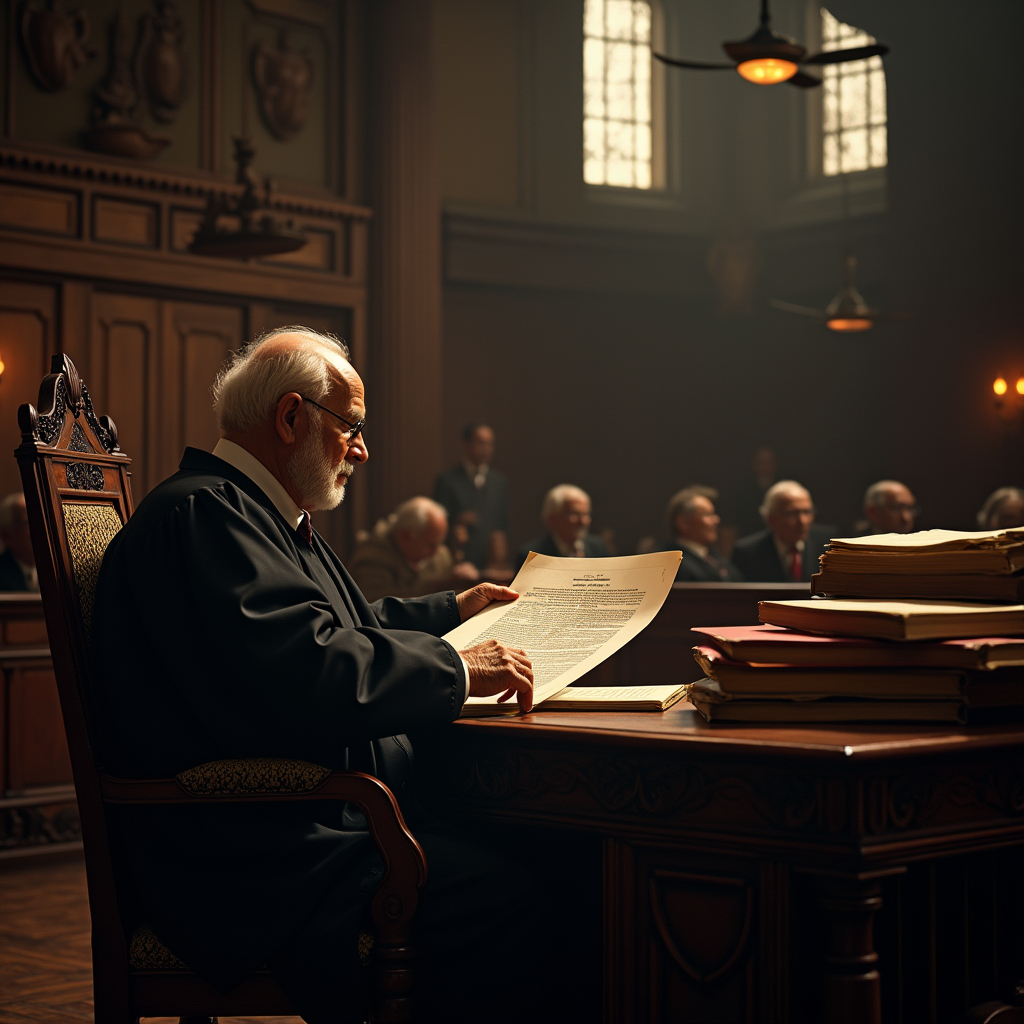This article has been written by Deyasini Chakrabarti and has been further updated by Sakshi Kuthari. This article mainly focuses on various aspects of divorce under the Hindu Marriage Act, 1955. It discusses in detail the concept and evolution of divorce in India, the various divorce theories, the sociological aspects relating to divorce, all the statutory provisions relating to divorce under the said Act, the process for filing a divorce, the alternative relief available in divorce proceedings and the judgements relating to divorce.
Table of Contents
Introduction
Marriage is a significant institution that not only unites two people but also interconnects their families, reflecting a commitment that extends beyond mere companionship. Traditionally, in many societies, including Hindu communities, marriage was viewed as a sacred and permanent bond with implications extending beyond this life. The concept of marriage in Hindu culture has historically been considered almost unbreakable, reflecting beliefs about the sanctity of marital vows and their connection to spiritual and societal order. This traditional view contributed to a strong stigma against divorce, making it a rare occurrence. However, the ongoing changes in society and evolving needs led to the introduction of the Hindu Marriage Act of 1955 (hereinafter referred to as the Act).
The Act marked a significant shift by legally recognizing the possibility of separation between the married couple by a decree of divorce and providing a structured process for it. The Act was passed to address the realities of modern life problems in relation to marriage while still respecting cultural traditions and reflecting the dynamic nature of societal norms and legal frameworks. The introduction of the provisions relating to divorce in the Act was a crucial step towards organising legal practices with present-day social needs while trying to navigate the thin line of balance between tradition and change. Under the Act, Section 13 is amongst the most revolutionary provisions. Since its introduction in 1955, it has been amended; instead, it has been liberalised several times to adapt to the evolving needs of society. From divorce under exceptional circumstances to divorce by consent, Indian society is now leading towards divorce on irretrievable breakdown of the marriage.
Concept of divorce
The term “divorce” originates from the Latin word divortium, which means “to turn aside” or “to separate.” It refers to the legal termination of a marital bond. Although divorce is not specifically defined in statutory provisions, it can be described as the legal dissolution of the marital ties established by marriage. All legal systems recognize that public policy, moral standards, and societal interests necessitate that marital relations be protected with comprehensive safeguards, and that dissolution of marriage should only occur in the manner and for the reasons specified by law. A divorce is also a seven lettered word that separates the united couple at their own wish with their own consent. Thus, divorce can be considered a means to break a marriage that happens not just between two individuals but also between two families. The various reforms that took place in relation to divorce are as follows:
Traditional Hindu concepts of divorce
The law of divorce was not recognised under the uncodified Hindu law. The traditional Hindu marriage law did not recognise divorce. It was so because marriage was considered a permanent and unbreakable bond between husband and wife. Manu believed that a wife could not be separated from her husband through sale or abandonment, emphasising the notion that the marital relationship was meant to be eternal and unbreakable. Among the Hindus, marriage is considered a sacramental union, i.e., an invulnerable, forever, indefeasible, and indestructible union. The concept of divorce was out of question under ancient Hindu law, while customary divorce was recognised in some Hindu communities and tribes. Kautilya’s Arthashastra permits divorce on the grounds of mutual animosity and with the consent of both parties.
Concept of divorce during the British regime
Early British efforts to seek to alleviate perceived social abuses and evils among Hindus focused on assisting widows to be able to remarry rather than helping individuals to break marriages. As public relations were negative, the British realised that it would be dangerous to interfere with Hindu marriage and divorce laws. The British hesitated to amend the existing laws out of concern for potential public backlash, and as a result, no divorce reforms were introduced for Hindus during British rule.
Modernist divorce reform in independent India
The post-colonial Hindu elite, which eventually gave the new divorce law to all Hindus, was deeply concerned to maintain an aura of progressiveness and modernity. In discussions and literature concerning reforms to Hindu divorce law, the primary focus has been on the introduction of statutory divorce for all Hindus through the Act . For the first time, Section 13 of the Act officially made divorce available to all Hindus in India. There have been multiple amendments to Section 13 of the Act to include additional grounds for divorce. As a result, Section 13 has shown an important and transformative change in Hindu marriage laws, thereby establishing specific conditions under which divorce can be granted.

Divorce theories
The various types of divorce theories are as follows:
Divorce at Will theory
According to this type of theory, a person may choose to divorce their spouse at their own free will. However, this concept is not recognized under Hindu law or the Act. In contrast, Muslim law does acknowledge this approach, permitting a husband to divorce his wife at his discretion without requiring consultation.
Offence or Guilt or Fault theory
The fault theory of divorce is also known as the offence theory or guilt theory. It provides that dissolution of marriage through divorce can take place in case one party commits a ‘matrimonial offence’ against the other party, who is deemed innocent. Offence theory shows a clear comparison between the guilty and innocent parties, with only the innocent party being eligible to seek a divorce. In case both the husband and wife are at fault, neither of them could take recourse under this theory.
‘Matrimonial offences’ recognised under the Act are as follows :
- Desertion: Desertion is the negation of living together, which is the essence of matrimony; it is unjustifiable; it constitutes a ground for matrimonial relief. The essence of the dissertation lies in the forsaking or abandonment of one of the spouses by the other. It is a total repudiation of the obligations of marriage. Divorce may be granted if the respondent has deserted the petitioner for a continuous period of not less than two years immediately preceding the presentation of the petition.
- Cruelty: To constitute cruelty in the matrimonial law, the conduct complained of should be “grave and weighty” so as to come to the conclusion that the petitioner cannot be reasonably expected to live with the other spouse. It must be something more than the “ordinary wear and tear of married life.”
- Rape: Rape is defined as sexual intercourse or other forms of sexual penetration carried out by a perpetrator without the victim’s consent. If the husband has been found guilty of the offence of rape, it constitutes a matrimonial offence.
- Sodomy: The husband has since the solemnisation of marriage been guilty of sodomy. Sodomy is the offence of forcing another person to perform oral or anal sex.
- Bestiality: In case the husband has been found guilty of bestiality, it constitutes a matrimonial offence. Bestiality is the offence of making sexual relations between a human being and a lower animal.
- Failing to follow the court’s order for providing maintenance to wife: In a suit under Section 18 of the Hindu Adoption and Maintenance Act, 1956 or in a proceeding under Section 125 of the Code of Criminal Procedure, 1973, a decree or order has been passed against the husband awarding maintenance to wife, and since the passing of such a decree or order, cohabitation between the parties has not been resumed for one year or upwards.
- Getting married to someone who does not come under the legal age to get married: The wife’s marriage (whether consummated or not) was solemnised before she attained the age of fifteen years and she repudiated the marriage after attaining the age but before attaining the age of eighteen years.
Based on the aforementioned matrimonial offences, it can be concluded that a personal injury to the marital relationship between spouses must be evident to fall under this theory. If the innocent partner forgives the wrongdoing of the guilty partner, a divorce cannot be granted in such a case.
Frustration of marriage theory
In the absence of any matrimonial offence if the marriage is frustrated, it is when one of the spouses is suffering from any physical ailment, mental unsoundness of mind, or change of religion, or has renounced the world or has not been known for a very long period. In this case, the other spouse has the right to put an end to the marriage by getting divorce. This theory has been followed by the Act as follows:
- Incurably of unsound mind: Section 13(1)(iii) provides that the petitioner has to establish that the respondent has been incurably of unsound mind or has been suffering continuously from mental disorder of such a kind and to such an extent that the petitioner cannot reasonably be expected to live with the respondent.
- Venereal disease in a communicable form: Section 13(1)(v) provides for venereal disease in a communicable form. A “communicable disease” is one that passes from one person to another through touch, using each other’s objects and also through intimate physical relationships. In order to succeed on this ground, the petitioner must establish, along with medical evidence, that the venereal disease that the respondent is suffering from is communicable.
- Renouncing the world by entering any religious order: Section 13(1)(vi) has been made a ground of dissolution of marriage by a decree of divorce for the husband or wife if the other party to the marriage has renounced the world. In a petition for divorce under this clause, the petitioner has to satisfy firstly that the respondent has entered any religious order and secondly that he has renounced the world.

Mutual consent theory
This type of divorce theory is different from other theories of divorce. Divorce by mutual consent means that the case is not like usual ones, wherein one party petitions against the other party for divorce and the other party resists the same. Here, both parties file a joint petition with the court for divorce between them. They have an intent to get rid of each other and they part amicably for mutual good. If a divorce is not granted, their lives would be severely impacted, leading to moral decline.
There are unproven objections against this type of divorce that the consent of the unwilling party might be obtained by force, fraud, or some other tactic, and this is a divorce by collusion. While collusion involves consent, not every instance of consent amounts to collusion. Collusion refers to a secret agreement done between two or more persons that results in achieving a fraudulent outcome. This secret agreement is done to accomplish a lawful goal through a mode of deception. Collusion differs from compulsion because, in the latter, one party imposes their will on another.
Divorce by mutual consent was added by the Marriage Act of 1976. This amendment has brought about a shift from the traditional practices of Hindu marriage as an unbreakable bond, as outlined in the Smritis, to a more consensual union under the Act. This theory has faced criticism for potentially encouraging immorality, as it might lead to premature divorces. It is argued by the critics that divorce by mutual consent encourages parties to bring their marriage to an end over relatively minor disagreements.
Irretrievable breakdown of marriage theory
Marriage, as mentioned a number of times, is a lifelong bond between husband and wife, but there are instances when the relationship may worsen to the point where separation is required. The theory of irretrievable breakdown of marriage situations arises when the marital relationship between the spouses has come to an end because of circumstances that make reconciliation unlikely. At this point, it becomes impossible for the husband and wife to continue to live together. When a marriage has collapsed to the level that there are no chances of repairing the marriage, it should be brought to an end without looking into the causes of the breakdown or assigning blame to either of the parties or both of them. In these situations, the need to separate the spouses takes precedence over the traditional values of love, affection, and loyalty that ideally should exist between spouses. The principle underlying the irretrievable breakdown theory of marriage is that if one party no longer wishes to remain in the marriage, it should be dissolved. The aim is to end the relationship with maximum fairness and minimal bitterness, pain, and humiliation. The Hon’ble Kerala High Court in the case of A. Yousuf Rawther vs. Sowramma (1971) stated in the context of this theory that “while there is no rose which has no thorns but if what you hold is all thorns and no rose, better throw it away. The ground for divorce is not conjugal guilt but breakdown of marriage.”
In some countries, additional grounds such as “incompatibility of temperament” and “profound and lasting disruption” have been introduced to support divorce claims based on the breakdown theory. The court has the responsibility to check whether a marriage has actually broken down or not. Some of the cases involve the legislature setting certain criterias for assessing the breakdown of a marriage. If, in the opinion of the court, those criteria are met, then a divorce can be granted. For instance, Section 13(1A)(i) of the Act requires the petitioner to show that they have been living separately from the respondent for at least one year or more after a decree for judicial separation or restitution of conjugal rights in a proceeding involving both parties.
Merits of Irretrievable breakdown of marriage theory
If the individuals, tied within the matrimonial bond, feel that the marriage is not working out, then mutually, it may give the right to both of them to stay and live life separately and happily without any botheration on either part. As there is no reasonable probability of staying together, it gives both of them the opportunity to start their lives as per their own wishes, both independently and separately.
Demerits of Irretrievable breakdown of marriage theory

- Irretrievable breakdown of the marriage may become an excuse where the married couples may always feel that little arguments are unreasonable as a result of which there is no probability of them staying together. Therefore, in my opinion, the process of divorce following the irretrievable breakdown of marriage theory is not justified.
- It may also result from sudden arbitrary unreasonable decisions.
- It sometimes happens based on temporary emotions such as anger, humiliation, etc. which a couple may go through during the heat of the argument.
- It fosters no communication procedure between the partners.
- It is not just the breakdown of marriage; it is also the wreckage of two united families at the time of marriage.
- If children are born out of that marriage when the parents ‘now’ think that there is no reasonable probability of staying together, such broken families could be a matter of stress for the child born out of the marriage as well.
Types of divorce recognised under the Act
Statutory divorce
The above-mentioned theories of divorce are recognized in contemporary Hindu law, allowing divorce to be pursued under any of the grounds. Initially, the Act established divorce on the basis of fault theory, which specified nine grounds for either of the spouses under Section 13(1) and two additional grounds for the wife under Section 13(2) for a divorce to take place. In the year 1964, Section 13(1A) was further added with two more grounds for divorce. The 1976 amendment further expanded the grounds by including two additional fault-based grounds for wives and introducing Section 13B, which allows for divorce by mutual consent.
Under the Act of 1955, the grounds for divorce included adultery, cruelty, desertion, conversion, insanity, venereal disease, and renunciation, as well as the presumption of death. For wives, additional grounds included the husband’s multiple marriages or if he committed the offence of rape, sodomy, or bestiality after marriage. Notably, on August 5, 2021, the Hon’ble Kerala High Court in the case of XXX vs. XXX (2021), recognized marital rape as a valid ground for divorce, despite it not being criminalized in India.
In the case of a statutory divorce taking place between a couple by mutual consent, both parties must jointly file a petition in the Family Court. It must be stated in the petition that they have either been living separately for at least a period of one year or have mutually agreed to dissolve the marriage. In that case, the court shall review the petition and check the supporting documents. The court may also make an attempt at mediation between the couple. If efforts at reconciliation do not turn out to be successful, the court will continue with the process of divorce without any delay.
Following the court’s review of the petition, the parties’ statements are recorded under oath, and the first motion is granted. The parties to the marriage then have a six-month time period to file the subsequent motion, with a maximum filing period of eighteen months from the date of the initial petition for divorce. Once both parties are prepared, hearings can commence. In the case of Amardeep Singh vs. Harveen Kaur (2017), the Hon’ble Supreme Court held that the six-month waiting period for divorce by mutual consent is not a mandate. In cases relating to divorce by mutual consent, both the husband and wife typically reach an agreement on matters such as divorce settlements, child custody, and property, provided they have a comprehensive understanding before finalising the dissolution of the marriage.
Customary divorce
In the very first place, Hindu law traditionally did not recognize the concept of divorce. It was only accepted by custom in certain communities, and courts acknowledged these customs as long as they did not oppose public policy. The intent of the Act is not to override customs validated by its provisions. It is permissible in certain cases for the spouses to not appear in court to obtain a divorce because of the existing customary grounds.
Section 29(2) of the Act protects customary divorce, stating that the Act’s provisions do not affect any rights granted by custom or any special law related to the dissolution of a Hindu marriage. In the case of Sanjana Kumari vs. Vijay Kumar (2023), the Hon’ble Supreme Court of India held that a Hindu marriage can be dissolved through a customary divorce deed if the customary right to do so is proven in the court of law. A specific claim regarding the existence of such a customary right must be presented to the court and supported by sufficient and appropriate evidence. Determining whether the parties are governed by a custom allowing divorce without invoking Sections 11 and 13 of the Act is a matter of fact that must be pleaded clearly before the judges and validated with convincing evidence. Such cases are generally tried by courts with civil jurisdiction. The burden of proving the customary divorce rests on the party relying on such a customary divorce.

Before the Act of 1955, Hindus could obtain a divorce only if a community-specific custom allowed it. The said Act acknowledged customary divorces and specified that its provisions do not apply to them. The following provisions of the Act do not pertain to customary divorces:
- Void marriages: A void marriage is one that is considered invalid or illegitimate from the outset, known as void ab initio. A decree of void marriage is essentially a judicial acknowledgment of an existing fact. According to Section 11 of the Act, a marriage will be deemed null and void by a decree of nullity if it contravenes the conditions outlined in Sections 5 (i), (iv), and (v) of the Act.
- Remarriage of a divorced person: Section 15 of the Act addresses the remarriage of individuals who have been divorced. It specifies that a person who has received a divorce decree can remarry once the decree is finalised either after the appeal period has ended or after any appeal has been dismissed.
- Decree in proceedings: Section 23 of the Act specifies that a marriage cannot be declared void or voidable due to any defects in consent unless it is proven that such consent was obtained through force, fraud, or undue influence. In other words, if both parties have willingly given their consent, the marriage is considered valid and cannot be challenged on the grounds of any consent-related defects.
- Maintenance pendente lite and expenses of proceedings: Section 24 of the Act addresses the provision of temporary financial support to a dependent spouse during ongoing legal proceedings. In other words, it ensures that the wife or husband receives necessary living expenses and financial aid while their legal case is still being heard. This support is intended to help the dependent spouse cover their basic needs throughout the litigation process.
- Permanent alimony and maintenance: Section 25 of the Act authorises the court to award permanent alimony and maintenance to either spouse. The court can determine the amount of alimony or maintenance either at the time of issuing a decree or at any point thereafter.
- Custody of children: Section 26 of the Act grants the court the authority to issue orders or make arrangements regarding the custody, maintenance, and education of children either during the ongoing proceedings or after a decree has been issued in cases involving the children’s parents. In cases where no such proceedings are taking place, only the Guardian Courts have the power to make these decisions.
Historically, many lower-caste Hindus practised divorce through custom, viewing the sacramental aspect of marriage as a formality rather than a substantive reality. However, there is no universal Hindu tradition of divorce, and practices vary on the basis of different castes and regions. When seeking a customary divorce, it must be proven that the parties are bound to fulfil such a tradition. Customary divorces can still be pursued as before the Act of 1955 through village panchayats, caste panchayats, private agreements, or written declarations like a tyaga-patra. A custom allowing one partner to unilaterally divorce the other is invalid if it is deemed unreasonable and contrary to public policy. Customary divorce constitutes an exception to general divorce laws. But it is necessary that it be substantiated and proven. Customs recognize various forms of divorce, which can occur with mutual consent or, in some cases, for questionable reasons by one party. The range of accepted divorce types is complex and diverse.
In Yamanji H. Jadhav vs. Nirmala (2002), the Hon’ble Supreme Court ruled that a customary divorce is valid only if it is allowed by the relevant custom or if the divorce is a recognized practice within that tradition. Once the existence of such a custom is demonstrated, the parties may file a declaratory action in court to affirm that their divorce deed is lawful, valid, and appropriate.
Reasons for divorce in society (A sociological perspective)
The rate of divorce in Indian society has grown to a large extent. There are a number of reasons for divorce and the dynamic approach of society at the same time could be witnessed regarding these stereotypical concepts of Indian society. The main reasons for divorce are as follows:
- Independence of Indian women
Previously, women followed the norms of the given society without questioning it with their heads bowed down in front of the society for the sake of the so-called ‘family respect and status in the society’. However, with increasing modernization, industrialization, and urbanisation women started getting educated and also became more aware of their social happenings. Thus, understanding the need to stand up for themselves, women started earning their own living and, therefore, became independent. They started raising their voices against the wrongs committed by their in-laws and husbands and started to live happily and independently. As a result, the women were not afraid to take a stand for themselves and to give divorce to their torturing husbands. Thus, the rate of divorce kept increasing.
- Communication gap in marriages
Communication plays a very important role in marriages. Thus, when there is no proper communication between the two partners, misunderstandings and fights are bound to take place. Thus lack of communication also sometimes becomes a reason for divorce.
- Cheating and affairs
A trust can never be built upon all over again once it has been broken. Thus, when a cheating partner breaks the trust of the loyal partner, it can never be restored again and as a result, divorce is bound to happen. Cheating and having an extramarital affair can destroy, demolish and doom a relationship that would have existed between both parties. In India, there are even penal provisions for cheating on a spouse.
- Problems with in-laws
It becomes very difficult for a girl who leaves her home and comes to a new family and later finds out that her in-laws are not cooperating, torturing her and making her life impossible to live. Instances are there as a result, the Indian Penal Code, 1860 also has a statutory provision relating to it such as Section 498A which states about the ‘husband or relative of the husband of a woman subjecting her to cruelty’. At the same time, there are also many instances of forcing the wife to bring money from her father’s home, and when she denies it or is unable to bring such huge financial amounts, the in-laws torture her to death. For this, we also have the penal provisions of Section 304B, which provide for dowry deaths.

It should also be mentioned that there are many instances of the wrong use of Section 498A; thus, in two such real cases, when there is actual torture and misuse of the law, divorce is bound to take place.
- Procreative problems in marriage
Indian societies are designed in such a way that society not only persuades and influences the couple to a great extent but it also decides when a couple should give birth to a child. This creates a lot of stress and if such problems are not sorted out between the partners, it may also become a ground for divorce.
Purpose of the law of divorce
In traditional Indian culture, divorce was not a recognized concept. With the changes in society, the purpose of divorce has evolved to both punish the guilty party and protect the innocent or loyal spouse within the marriage. The true purpose for getting a couple married is to create a harmonious and supportive partnership between the two individuals. If this objective cannot be fulfilled by the concept of marriage; maintaining the relationship of marriage is baseless. Therefore, the concept of divorce developed to enable individuals, previously bound by marital ties, to pursue a fulfilling, independent, and separate life.
Important provisions relating to divorce under the Act of 1955
With the evolution of Indian society, the concept of divorce got formalised under the Act. Consequently, several sections under the said Act provide provisions for divorce, including:
Valid conditions for a Hindu marriage
The valid conditions for a marriage to be solemnised between any two Hindus are provided under Section 5 of the Act. Thus, it could also be interpreted that if one of these conditions is contravened or not fulfilled, then it could also be a ground for divorce. These conditions are as follows:
- At the time the marriage is solemnised, neither party should have a living spouse.;
- At the time of marriage, neither party:
- Is capable of providing valid consent due to unsoundness of mind;
- Even if able to provide valid consent, suffers from a mental illness so severe that marriage and procreation are entirely impossible;
- Has experienced persistent episodes of insanity.
- The groom must be minimum 21 years of age, and the bride must be minimum 18 years of age at the time of marriage;
- The parties should not be within degrees of prohibited relationships unless a custom or usage applicable to both allows for their marriage;
- The parties should not be ‘sapindas’ of each other unless a custom or tradition that applies to both permits their marriage.
Restitution of conjugal rights
The term “conjugal rights” refers to each spouse’s right to stay in companionship and marital intimacy with each other. “Restitution of conjugal rights,” on the other hand, denotes the restoration of these rights that the parties once enjoyed. Section 9 of the Act formally recognizes the right to companionship within marriage. If one spouse leaves the other spouse without a justifiable reason, the aggrieved party may seek a court decree for the restitution of conjugal rights. This provision is adapted from the English law. It is the only affirmative remedy available under the Act because the other available remedies may undermine or disrupt the marriage. Restitution of conjugal rights can be granted if the following conditions are fulfilled:
- The respondent is now living without the petitioner.
- The departure of the respondent occurred without a valid reason.
- The court is satisfied that the claims of the petitioner are valid.
- There exists no legal grounds to deny the application for restitution of conjugal rights.
According to Section 9, the burden of proving the justification or reasonable excuse for the withdrawal lies upon the party against whom the accusation is made. This section stipulates that once withdrawal from the side of the petitioner is established, the withdrawing spouse must give reasonable justification for their actions.
Judicial separation
“Judicial separation” can be described as a legal process in which a married couple is officially separated but still holds the status of being legally married. This concept is described in Section 10 of the Act. Either spouse, whether the marriage occurred before or after the Act’s commencement, can file a petition for judicial separation on any of the grounds specified in subsection (1) of Section 13, and, for the wife, also on any grounds listed in subsection (2) of Section 13.
Section 10(2) provides that once a decree for judicial separation is allowed by the court, the petitioner is no longer under an obligation to live with the respondent together. However, the court has the authority to dismiss or revoke the decree if, upon reviewing the petitioner’s application and verifying the statements, it finds it just and reasonable to do so.

Divorce
Divorce is the legal termination of a marriage. Divorce can be obtained by submitting a petition to a court having appropriate jurisdiction. Section 13(1) of the Act outlines the grounds for divorce, which are applicable to both spouses. When these conditions are fulfilled, divorce becomes inevitable. The marriage remains legally valid until the court grants a decree of divorce, and neither party is allowed to remarry until this divorce decree is granted. Section 13 also applies to marriages conducted before the Act came into effect. Either spouse may file for divorce based on one of the following grounds:
Grounds for divorce
Adultery
Adultery is defined under Section 13(1)(i) of the Act. It stipulates that if a married person engages in sexual intercourse with someone other than their spouse after the commencement of a marital relationship, it is considered adultery. Historically, adultery was also a criminal offence in India under Section 497 of the Indian Penal Code, 1860. This section criminalised engaging in sexual intercourse with someone who is married and whom the individual knows or reasonably believes to be someone else’s wife, without the husband’s consent. The penalty for this offence included imprisonment for up to a period of five years, a fine, or both, with the wife not being deemed an accomplice. Additionally, Section 198(2) of the Code of Criminal Procedure, 1973, addressed the prosecution of offences related to marriage. However, in the case of Joseph Shine vs. Union of India (2018), the Hon’ble Supreme Court of India declared Section 497 of the Indian Penal Code and Section 198(2) of the Code of Criminal Procedure unconstitutional, leading to their invalidation.
Cruelty
Cruelty, in simple terms, means torturing or unreasonable brutal behaviour against one. Section 13(1)(ia) of the Act of 1955 states that even after solemnization of marriage, treating the petitioner with cruelty can also be considered as a ground for divorce. Cruelty is also a criminal offence and has statutory provisions for the same. Sections 85 and 86 of the Bharatiya Nyaya Sanhita, 2023 states about cruelty by the husband or the relative of the husband upon the wife. The person committing cruelty shall be punished with imprisonment for a term that shall extend for 3 years, or with fine or both. The explanation to Section 85 of the Bharatiya Nyaya Sanhita, 2023 states that any deliberate act likely to drive a woman to commit suicide is considered cruelty. Section 86 of the Bharatiya Nyaya Sanhita, 2023 defines cruelty as:
- Any intentional behavior likely to compel a woman to commit suicide or cause significant harm or danger to her life, physical health, or mental well-being; or
- Harassment caused to a woman with the intent of forcing her or her relatives to fulfil unlawful demands for property or valuable assets, or resulting from the failure to meet such demands.
In the landmark case of Shobha Rani vs. Madhukar Reddi (1988), the Hon’ble Supreme Court noted that the term “cruelty” is not expressly defined anywhere in the Act. It is used to describe conduct or behaviour related to matrimonial duties or obligations. Cruelty as a ground for divorce was introduced by the Marriage Laws (Amendment) Act, 1976. Before this amendment, cruelty was only a ground for judicial separation, except in the State of Uttar Pradesh. Section 13(1)(ia) provides that the cruelty caused either to the husband or to the wife must impact the physical or mental health. It is the discretion of the courts to decide, based on the circumstances of each case, to determine whether the behaviour constitutes cruelty or not.
The wife’s behaviour in the case of S. Hanumath Rao vs. S. Ramani (1999) was not cordial at her matrimonial home and towards her husband. The Hon’ble Supreme Court in this case held that mental cruelty means when either party to a marriage causes mental pain, suffering or distress to such an extent that it severs the bond between the husband and wife and, as a result, it becomes impossible to live together.
In the case of Christine Lazarus Menezes vs. Mr. Lazarus Peter Menezes (2017), the Hon’ble Bombay High Court held that filing false cases under Section 498A of the Indian Penal Code, 1860, constitutes cruelty and can be a ground for filing divorce. The details of the case are as follows:

- The appellant’s wife challenged the Family Court’s decision that had approved the respondent’s application for divorce. The Hon’ble Bombay High Court upheld the Family Court’s ruling, rejecting the appeal and choosing not to overturn the divorce granted on the grounds of “cruelty.”
- The court observed that during proceedings, the wife admitted under oath to filing an FIR at the Kherwadi Police Station, Mumbai, against her husband under Sections 498A and 406 of the Indian Penal Code, 1860. She also admitted that she had filed the criminal complaint in an attempt to force her husband to return to their marital home;
- Given these facts, the court noted that if the criminal complaint filed by the wife was not true and intended solely to coerce her husband back into their home, resulting in his arrest and a seven-day imprisonment, it would amount to cruelty by the wife towards her husband.
The provisions related to cruelty are also provided under Section 117 of the Bharatiya Sakshya Adhiniyam, 2023. It states that if it is established that a woman’s suicide was facilitated by her husband or his relatives, and if she took her life within seven years of marriage after having endured cruelty from her husband or his relatives, the court, considering all pertinent factors, may conclude that her suicide was abetted by them.
Desertion
In express terms, desertion refers to the act of abandoning a person. The fundamental concept of desertion is that one spouse has left the other, which is done against the will of the abandoned party and shows a complete abandonment of marital duties. Desertion can only be claimed if, after the marriage ceremonies, both parties acknowledged and fulfilled their mutual obligations, which fundamentally include cohabitation for the purpose of consummating the marriage. Cohabitation constitutes an essential element of a valid marriage, and desertion cannot be claimed by the abandoned party if no cohabitation has occurred between the couple. However, there are certain exceptions, such as cases involving mental or physical incapacity or other specific situations.
Desertion was initially a ground for only judicial separation under the Act, but it is now also a ground for divorce under Section 13(1)(ib) of the Act. According to Section 13(1)(ib), a divorce can only be granted if the petitioner has been deserted by the respondent for a continuous period of two years immediately preceding the petition. In Jyothi Pai vs. P.N. Pratap Kumar Rai (1987), the Karnataka High Court ruled that the burden of proving abandonment without reasonable cause lies on the petitioner. Similarly, in Kanchan Sahu vs. Permananda Sahu (1999), the Orissa High Court determined that a husband could not claim desertion by his wife if he had maintained a mistress in the matrimonial home. Thus, under such circumstances, the wife can apply for divorce on the grounds of desertion.
Conversion
Conversion or apostasy as a ground for divorce is defined under Section 13(1)(ii) of the Act. It occurs when one spouse deliberately renounces their religion and adopts a different, distinct religion following the formal marriage ceremonies. Under this Act, conversion means adopting a major religion other than Hinduism. To use this ground for divorce, the petitioner must establish the following:
- The other spouse has ceased to be a Hindu, and
- The other spouse has done so by adopting a different religion.
This ground for divorce is available only to the spouse who has not converted. Allowing the converting spouse to seek divorce based on their own conversion would be akin to benefiting from their own wrongdoing or fault, as outlined in Section 23(1)(a) of the Act. The right under Section 13(1)(ii) is thus reserved for the non-converting spouse, who may choose either to divorce the converting spouse or to continue the marriage. Alternatively, if the non-converting spouse is the wife, she may seek separate residence and maintenance under Section 18 of the Hindu Adoption and Maintenance Act, 1956. A husband cannot successfully claim restitution of conjugal rights if the wife refuses to live with him. Furthermore, if the husband remarries after converting to another religion, such as Islam, he will face legal consequences, and his new marriage will not affect the legal rights of his existing Hindu spouse.
In Sarla Mudgal vs. Union of India (1995), the husband converted himself, adopted Islam and married another wife. The question arose in this case: whether, by conversion, the first marriage is annulled or becomes void and whether the husband is liable for the offence of bigamy. The Hon’ble Supreme Court held that the first marriage would subsist and the husband is liable for the offence of bigamy. An appeal was lodged by the husband and resolved together in the case of Lily Thomas vs. Union of India (2000). The petitioner, Sushmita Ghosh, submitted a petition to the Hon’ble Supreme Court, asserting that she had been married to Mr. M.C. Ghosh according to Hindu customs since 1984. However, in 1992, Mr. Ghosh sought a divorce by mutual consent, citing his conversion to Islam in order to marry Ms. Vinita Gupta, a divorcee with two children. Since the Hindu Marriage Act, 1955, does not permit a second marriage or bigamy, Mr. Ghosh provided a certificate of his conversion to Islam. The facts suggest that Mr. Ghosh’s conversion was solely for the purpose of entering into a second marriage, rather than a genuine adoption of the new faith. The Hon’ble Supreme Court observed that where a spouse contracts a second marriage while the first marriage is still subsisting, the spouse would be guilty of bigamy under Section 494 of the Indian Penal Code, 1860 (now Section 82 of the Bharatiya Nyaya Sanhita, 2023).

Unsoundness of mind
A person who cannot discern right from wrong or who is unable to give or withhold consent regarding events around them is not deemed competent to enter into matrimonial bonds. Unsoundness of mind, as a ground for divorce, is defined under Section 13(1)(iii). Before the amendment of 1976, “unsoundness of mind” for a period of one year was a ground for judicial separation, and for three years in the case of divorce. Now, after the said amendment, no prior period is prescribed. The expression “unsoundness of mind” includes all sorts of mental cases, including sub-normality and abnormality. To claim relief under this clause, the petitioner has to prove the following:
- The respondent has been of an unsound mind;
- That the same is incurable; and
- The mental disorder is of such a nature and severity that the petitioner cannot reasonably be expected to live with the respondent.
Explanation to this clause provides the following:
- The articulation “mental disorder” implies dysfunctional behaviour, captured or deficient advancement of the brain, psychopathic confusion or some other issue or incapacity of the brain, and incorporates schizophrenia;
- Similarly, the articulation “psychopathic disorder” implies a tenacious issue or incapacity of the brain (regardless of whether including sub-typicality of insight) which brings about strangely forceful or genuinely irresponsible conduct lead with respect to the other, and whether it requires or is susceptible to clinical treatment. Thus when a person is suffering from such an unstable mental condition, he/ she can never perform their rights and duties in a marriage . It is also one of the most important grounds of divorce.
The Hon’ble Gujarat High Court ruled in the case of Ajitrai Shivprasad Mehta vs. Bai Vasumati (1969) that when seeking matrimonial relief on the grounds of unsoundness of mind, it must be proven beyond a reasonable doubt to fully satisfy the court.
In the case of Trimbak Narayan Bhagwat vs. Kumudini Trimbak Bhagwat (1967), the husband, during an episode of insanity, tried to strangle the wife’s brother and, on a separate occasion, her younger son in the wife’s presence. The Hon’ble Bombay High Court observed that the husband’s actions amounted to cruelty, even in the absence of any deliberate intent to be cruel. In a similar vein, the Hon’ble Supreme Court in Dr. N.G. Dastane vs. Mrs. S. Dastane (1975) dismissed the husband’s petition, finding no evidence of unsoundness of mind. Although the respondent had experienced some mental disorders before marriage, she had fully recovered by the time of marriage.
Venereal disease in a communicable form
Under Section 13(1)(v), a venereal disease, commonly known as sexually transmitted disease, can be grounds for divorce. If one spouse has a serious, incurable, and transmissible disease, the other spouse may file a petition for divorce. Diseases explicitly classified as venereal, such as AIDS, fall under this provision. In order to succeed on this ground, the petitioner must prove with medical evidence that the venereal disease that the respondent is suffering from is in a communicable form. In the case of Birendra Kumar vs. Hemlata Biswas (1921), divorce was granted to the husband because the wife had incurable syphilis, which she had before the marriage and did not disclose to the husband. Additionally, since the marriage had not been consummated, the Calcutta High Court ruled that annulment would be granted, despite there being only a slight chance of a cure.
Renunciation
Under Section 13(1)(vi), a person may seek a divorce if one spouse renounces worldly affairs by embracing a religious or other belief system. The individual renouncing the worldly affair reaches a state of self-actualisation, as described by Maslow. When a person chooses not to fulfil the responsibilities of marriage, relationships, and family, this can also be considered a valid ground for divorce. In the case of a divorce petition filed under this clause, it must be demonstrated that the respondent has joined a religious order, such as by moving to an ashram with the intention of living there permanently. Just by adopting the attire of a sanyasi, performing the duties of a pujari or mahant in a temple, or serving as a granthi in a gurudwara does not make a person a sanyasi and thus does not meet the criteria of the said clause. The Hon’ble Supreme Court, in Sital Das vs. Sant Ram & Ors. (1954), ruled that under Hindu law, renouncing worldly affairs and joining a religious order generally amounts to civil death. It is also important to provide quality evidence that all necessary ceremonies for entering the religious sect or order have been properly observed.

Presumption of death
Under Section 13(1)(vii) of the Act of 1955, it has been provided that if an individual has not been heard from by those who would have normally been aware of their whereabouts for a continuous period of seven years, they shall be presumed to be legally dead. This presumption is based on the belief that if the person were alive, they would likely have been in contact with friends or relatives. If the close relatives provide sworn evidence that the person has not been heard from in seven years, the individual is presumed to be dead, and a decree of divorce may be granted to the petitioner. Similarly, Section 111 of the Bharatiya Sakshya Adhiniyam, 2023 provides that if it is proven that no one who would normally know about the person has had any contact with them in seven years, the burden of proving that the person is still alive shifts to the claimant.
If an individual has not been seen or heard from by those who would normally be aware of their presence for a continuous period of seven years, they are legally presumed to be dead. This presumption provides grounds for divorce under Section 13(1)(vii) of the Act. The rationale behind this is that, if the individual were still alive, they would likely have made contact with their friends or relatives. When close relatives provide sworn testimony that the person has been missing for seven years, the individual is considered deceased, and the court may grant a decree of divorce in favour of the petitioner. According to Section 111 of the Bharatiya Sakshya Adhiniyam, 2023 if it is proven that no one who would typically have knowledge of the person has heard from them in seven years, the burden of proving that the person is alive shifts to the one claiming their survival.
It is important to note that in divorce petitions filed under clauses (vi) and (vii) of sub-section (1) of Section 13 of the Act, the respondent is not obligated to appear in court. In these cases, the court issues public notices in newspapers at the petitioner’s expense and allows a reasonable period for the respondent to respond.
Irretrievable breakdown grounds of marriage
Non-resumption of cohabitation after the decree of judicial separation
Section 13 (1A)(i) of the Act of 1955 provides that if, after the passing of the decree of judicial separation, cohabitation between the husband and wife has not been resumed for a period of one year or longer, divorce may be prayed for by either of the parties. Cohabitation means to dwell together as husband and wife. Mere going together with them on some occasions to temples or the places of friends does not amount to cohabitation. The decree of judicial separation might have been passed under Section 13(1A) at the discretion of the court in place of the decree of divorce prayed for by the petitioner.
Failure to adhere to the decree of restitution of conjugal rights
Section 13 (1A)(ii) of the Act provides that if, after the passing of the decree of restitution of conjugal rights, there has been no restitution of conjugal rights for a period of one year or more, either of the parties may file a petition for divorce on this ground. Restitution of conjugal rights means that cohabitation must be resumed by the parties. The husband and wife should act as husband and wife towards each other. A promise to join the conjugal relationship without in fact joining on a fake excuse of ill health is held to be non-restitution of conjugal rights. Sexual intercourse can be a significant or compelling evidence of cohabitation, yet there may be cohabitation even when no sexual intercourse has taken place for a reasonable cause.
The term “passing of a decree” in Sections 13(1A)(i) and (ii) of the Act of 1955 refers to the issuance of a judgement, not merely the formal drafting of the decree. In the case of Smt. Bimla Devi D/O Bakhtawar Singh vs. Singh Raj S/O Dasondhi Ram (1976), the Hon’ble Punjab and Haryana High Court held that if an appeal is made against the decree passed by the lower court under Section 9 of the Act and its execution is not stayed, the period of one year is calculated from the date the decree was passed. The ongoing appeal does not affect the one-year time frame. Section 13(1A) does not grant an absolute right but is subject to the limitations in Section 23(1)(a) of the Act. Its purpose is to extend the right to apply for divorce, not to guarantee that a divorce petition will be granted solely based on the absence of cohabitation or restitution for the required period.
Special grounds for divorce for wives

Section 13(2) of the Act of 1955 provides the following four additional grounds of dissolution of marriage, which are available only to a wife, in addition to the other grounds provided by Sections 13(1) and (1A):
Husband’s bigamy
Before the Act of 1955 came into force, Hindu law had no limit to the number of wives a man could have at a time. The Act of 1955 has made bigamy an offence under Sections 5 and 18. Section 13(2)(i) of the said Act says either of the co-wives of a man can seek divorce, provided that:
- Both wives were married to him before the commencement of the said Act;
- Both wives are alive when a petition for divorce is filed, and’
- Both the above-mentioned marriages legally exist at the same time.
Under this section, it is essential to provide clear evidence of the prior marriage, as simply living together as husband and wife is insufficient. The burden of proof lies upon the wife to prove the validity of the previous marriage.
Rape, sodomy or bestiality
Section 13(2)(ii) of the Act stipulates that a wife can seek divorce on the grounds that, since the marriage, her husband has been guilty of rape, sodomy, or bestiality. These offences are also criminalised under the Bharatiya Nyaya Sanhita, 2023, which prescribes penalties for them. It is not required for the husband to have been convicted of these crimes in a criminal court; the key factor is that the offence occurred after the marriage of the petitioner. The three matrimonial offences are defined as follows:
- Rape: Rape is non-consensual sexual intercourse by a man with a woman. Exception 2 of Section 63 of the Bharatiya Nyaya Sanhita, 2023 provides that a man can be punished for raping his own wife if she is under the age of eighteen years. In such cases of marital rape, the wife may file a petition for divorce on the grounds of rape.
- Sodomy: Sodomy is defined as an anal intercourse between a man and his wife, another woman, or another man. The consent of the victim or age is not a relevant criteria to be determined in these cases to convict the accused.
- Bestiality: Bestiality involves sexual intercourse with an animal and is classified as an unnatural offense.
Non-cohabitation after maintenance order
Section 13(2)(iii) of the Act of 1955 states that if a decree or order has been made requiring the husband to provide maintenance to the wife, and
- she has been living separately; and
- cohabitation has not resumed for a year or more since the decree or order, the wife is entitled to file a petition for divorce on these grounds.
A decree or order of separate residence and maintenance can be obtained, under Section 18 of the Hindu Adoptions and Maintenance Act, 1956 and under Section 144 of the Bharatiya Nagrik Suraksha Sanhita, 2023. The law therefore gives such a wife, who obtains a decree or order, a right to seek divorce if her husband does not resume cohabitation within one year from the date of decree or order.
Where a decree under Section 18 of the Hindu Adoptions and Maintenance Act, 1956 or an order under Section 144 of the Bharatiya Nagrik Suraksha Sanhita, 2023 is passed in favour of the wife, it is the husband’s duty to pay maintenance to her, and he must resume cohabitation within one year. If the husband fails to do so, the wife can seek divorce. If the husband offers cohabitation and the wife does not respond, she is within her rights; to compel her to respond is to defeat the statutory provisions that allow her to live separately without losing maintenance.
Repudiation of marriage (option of puberty)
Section 13(2)(iv) of the said Act confers a right on girls who are married before attaining the age of fifteen years, a right of repudiation. Consummation of marriage is immaterial here. Under this clause, a wife can get divorced if:
- At the time of her marriage, she was below the age of fifteen years; and
- After that, but before attaining the age of eighteen years, she repudiated the marriage.
No procedure is laid down under this section or the Act for repudiation of marriage. The fact of repudiation has to be proved, therefore, by the wife. This clause only gives a right of repudiation, as therein mentioned but the petition for dissolution of marriage on this ground is maintainable by her after completing eighteen years of age. This clause was added by the Marriage Law (Amendment) Act of 1976. There was no such right prior to the amendment. Thus, if she has exercised this option to repudiate her marriage, she can file a petition for divorce on this ground. The Act of 1955 indirectly accepts that a minor’s marriage is not void (though penal) because, if it were void, the question of allowing a divorce should not arise.
Alternative reliefs in divorce proceedings

Under Sections 13(1)(ii), (vi), and (vii) of the Act of 1955, the petitioner has the option to seek either judicial separation or divorce. If the petitioner chooses to file a divorce on these grounds, the court must grant it after verifying the claims with sufficient and appropriate evidence. The court may consider granting judicial separation as an alternative relief only if the respondent has not converted to a different religion, has not joined a religious order, or has not been known for a period of seven years or more.
The grounds for divorce and mutual separation are almost the same. Therefore they could use its discretion for not passing a decree for divorce straight away even if the divorce proceeding had been initiated under Section 13(A) of the Act. Instead, the court may pass a decree for judicial separation. Therefore, the law always keeps hope and tries to make the last attempt to bring the parties back together by solving the disputes between them. However, there can be no alternate relief or attempt by the court for the parties if the proceedings of divorce are being made on the grounds of conversion, renunciation or the belief of being dead as the other party didn’t return for seven years.
In the case of Balveer Singh vs. Harjeet Kaur (2017), the Hon’ble Uttarakhand High Court held that the principle of res judicata does not apply to subsequent suits filed under Section 13 of the Act of 1955. The details of the case are as follows:
- The appellant filed a petition for divorce under Section 13A of the Act of 1955 to seek the dissolution of marriage. The main issue for the High Court was whether this petition would be restricted by Section 11 of the Code of Civil Procedure, 1908, considering the fact that the proceedings under Section 9 of the Act of 1955 (for restitution of conjugal rights) had already been resolved. It is provided under Section 11 of the Code of Civil Procedure, 1908, that no court adjudicates any suit or issue that has already been directly and substantially decided in a previous suit;
- The High Court noted the following points while addressing this issue:
- Section 9 of the Act serves a different purpose. It addresses cases where a married couple is unjustly withdrawing from fulfilling marital duties, and the relief provided is intended to encourage reconciliation and resumption of marital obligations;
- Sections 9 and 13-A of the Act cater to different circumstances. Section 9 aims to restore marital relationships, while Section 13A deals with the legal dissolution of marriage;
- The High Court concluded that Section 11 of the Code of Civil Procedure does not bar the filing of a subsequent suit under either Section 9 or Section 13A of the Act of 1955;
- If Section 9 proceedings are either declared or dismissed, it does not preclude a party from pursuing a petition for dissolution of marriage under Section 13-A of the Act at a later stage.
Divorce by mutual consent
Section 13B of the Act of 1955 is similar to Section 28 of the Special Marriage Act, 1954. This provision was inserted by the Marriage Law (Amendment) Act, 1976. It is retrospective as well as prospective from the commencement. Hence, parties to a marriage, whether solemnised before or after the amending Act, can avail themselves of this provision. The intent of this provision is to enable couples to end their marriage by mutual consent if it has irreparably broken down and to support their rehabilitation through various available options. The amendment was grounded in the view that compelling unwilling partners to stay married serves no constructive purpose. The cooling-off period was intended to prevent hasty decisions when there might still be a chance for reconciliation. Its aim was not to enforce a futile marriage or to extend the parties’ suffering when reconciliation is impossible. Although efforts should be made to preserve a marriage, if reconciliation seems unlikely and there are new opportunities for rehabilitation, the court should not be powerless to provide the parties with a more favourable alternative.
Essentials of Section 13B of the Act of 1955
Section 13B(1) requires that a petition for divorce by mutual consent be submitted jointly by both parties. Similarly, Section 13B(2) states that both parties to the suit must jointly request the court set a date for a hearing on the divorce petition. The following additional requirements must also be met:
- The parties must have lived separately for at least an year;
- They must have been unable to reconcile and cohabit together;
- They must have mutually agreed to dissolve the marriage;
- A minimum period of six months must have passed from the date of filing the petition.
- They must jointly request the court issue a decree before the expiry of eighteen months from the date of filing the petition.
- The divorce must be sought with the mutual consent of both parties to the suit. It must be free from coercion, fraud, or undue influence.

Ground rests on three facts
Section 13B(1) of the Act stipulates that a petition for the dissolution of marriage by a decree of divorce may be filed jointly by both parties to the marriage in the District Court, based on the following grounds:
- Living separately for a period of one year: The parties have been “living separately” for a period of one year or immediately preceding the presentation of the petition. If they had lived separately for a year or more at some time in their life but not immediately before the petition, then this ground is not made out. It is required that, just prior to filing the petition, the parties have been living separately. In this context, “living separately” means “not residing together as husband and wife.” The key factor is the lack of intention to fulfil marital obligations, and their separation reflects this mental attitude. Ultimately, it is their mutual attitude towards each other that determines whether they are living together or apart as life partners.
- The parties have not been able to live together: The disability in living together may be due to some internal or subjective reason. It may be that they do not like each other or either of them likes or both of them like some other person or persons. Maybe their philosophy of life, or socio-political views, or habits and ways of life, etc. do not agree with each other or maybe because of their physical incapacity to enjoy their married life or their different preoccupations, they do not want to remain in wedlock. The substance of this condition is that their marriage is broken down and it would not be possible to reconcile themselves.
- Mutually agreed to dissolve the marriage: The parties have mutually agreed that their marriage should be dissolved. Section 23(1)(bb) of the said Act provides that their mutual consent to this effect must not be obtained by force, fraud or undue influence. The same may proceed from one party to the other or from a third party to both parties.
Waiting period for consideration of petition
Section 13B(2) of the Act of 1955 provides that the court will pay no heed to such a petition for six months. This is a compulsory provision. This is for the purpose of giving time to the parties to rethink this drastic step. The parties must file a joint motion not earlier than six months and no later than eighteen months after the divorce petition is filed. This motion allows the court to proceed with the case to verify the validity of the petitioner’s claim and to ensure that consent was not obtained through coercion, fraud, or undue influence. The court may conduct inquiries, such as hearings and examinations of the parties, to verify the accuracy of the petitioner’s statements. If the court is of the opinion that the consent was given freely and that the parties have agreed mutually to dissolve the marriage, it is under an obligation to grant a decree of divorce.
After six months, the court will not take any action on the petition unless the parties actively move the court to proceed. The motion must be filed jointly by both parties; if only one party submits it, the mutual nature of the consent to divorce may appear questionable.
A Constitution Bench of the Hon’ble Supreme Court in the case of Amardeep Singh vs. Harveen Kaur (2017) has ruled that it may exercise its exceptional powers under Article 142 of the Constitution of India to waive the standard six to eighteen months waiting period usually required for a divorce by mutual consent under Section 13B of the Act.
The discretion to waive the waiting period is guided by principles of justice, especially when reconciliation seems impossible, the parties have been separated for a significant duration, or the litigation has exceeded the time specified in Section 13B(2). The court should consider the following factors:
- The duration of the marriage;
- The time duration since the litigation is pending;
- The time duration since the parties have been living separately;
- Whether there are any other proceedings between the parties;
- Whether the parties have participated in mediation or conciliation proceedings;
- Whether the parties have reached a settlement to address issues such as alimony, child custody, or any other pending matters.

The court also held that for the waiting period to be waived off, it must be confirmed that the parties to the marriage have been living separately for longer than the prescribed statutory period, that all mediation and reconciliation attempts have been exhausted, and that reconciliation is no longer feasible. Additionally, the court must be convinced that extending the waiting period would only prolong the suffering of both parties.
Procedure for divorce under mutual consent
| Steps | Procedure for divorce under mutual consent |
| Step 1 First, the petition for divorce has to be filed. | Initially, a joint petition for mutual divorce is filed by both parties in the family court. This petition states that they have either been unable to live together and have mutually agreed to end the marriage or have been living separately for a period of one year or more. The petition must be signed by both parties. |
| Step 2Secondly, court appearance and examination of the documents. | Both parties must appear in the family court after filing the petition. They are represented by their legal counsels. The court will review the petition and inspect the documents carefully. If the parties do not resolve the differences, the court will continue the divorce proceedings and may take steps it considers appropriate. |
| Step 3Thirdly, the order for recording the statements on oath. | After the court reviews the petition, the statements of both parties are recorded under oath. |
| Step 4After the first motion is granted, a waiting period of six months is required before the second motion can be filed. | Once the statements of both parties are recorded, the court issues the first motion. Following this, both parties are given a time duration of six-months to remain separated before they can file the second motion. The maximum time allowed for filing the subsequent motion extends up to eighteen months from the date the divorce petition was originally filed in the Family Court. |
| Step 5Second motion and final hearing | Once the parties decide to proceed and appear for the subsequent motion, they can continue with the final hearings.This incorporates parties showing up and recording of explanations and statements under the Family Court. Recently, the Supreme Court has held that the 6 months time period that is given to the parties can be turned down at the choice of the court. Consequently, the parties who have really settled their disparities, including divorce settlement, child custody or some other pending issues between the gatherings, tend to postpone them this half year. Even if the court feels that the period of 6 months will increase their suffering, it can waive the same. |
| Step 6Decree of divorce | In a mutual divorce, the two parties are more likely to give assent and there will not be any differences in opinions with disputes in regards to a divorce settlement, guardianship of a child, maintenance, property, and so on. Along these lines, there should be finished understanding between the spouses for an official choice on the dissolution of a marriage. |
Section 14
Section 14(1) of the Act states that no petition of divorce could be filed within the first year of marriage. A time period of one year is the gap given by the law itself in order to solve, sort, understand and communicate problems with each other. Thus, no court shall be competent to entertain a petition for divorce unless a time gap of one year has elapsed.
However, upon receiving an application in accordance with the rules set by the High Court, the court may permit the petition to be filed before the one-year period in cases of exceptional hardship for the petitioner or extraordinary misconduct by the respondent. If the court discovers any misrepresentation or concealment of facts at the time of hearing, it may dismiss the petition without prejudice, as it may deem fit.
“Exceptional hardship” and “exceptional gravity” expressions have not been defined anywhere in the Act of 1955. These terms have an extensive scope and address unusual and extraordinary situations. If the petitioner can demonstrate that the hardships are so severe that their life has become unbearable, or if the respondent has committed a grievous moral offence that has made the situation intolerable, the court may grant a divorce decree without waiting for the full one-year period to expire.

Section 14(2) stipulates that, when deciding an application under this section, the court must also consider the welfare of any children born from the marriage and the possibility of reconciliation between the parties. The court takes regard to the reasonable probability of reconciliation between the spouses. These considerations are extraneous to the consideration of exceptional hardship or depravity. In each case, the chance of reconciliation has been given primacy. Even though the spouse’s relation is strained and there exists no immediate prospect of reconciliation, the interest of the child is to be given paramount consideration.
Section 15
Section 15 of the Act of 1955 outlines the conditions under which a divorced person may remarry. It stipulates that once a marriage is dissolved by a divorce decree, and either there is no right of appeal or, if there is, the appeal period has passed without an appeal being filed, or if an appeal was filed but dismissed, both parties are legally permitted to remarry.
Procedures of divorce (Detailed study under the Hindu Marriage Act 1955)
Section 19 of the Act states the court in which the petition of divorce should be presented. It also highlights the fact that every petition that is sought to have been presented under this Act should be presented to the district court within the local limits of the ordinary original civil jurisdiction. The petition can, therefore, be filed in:
- The place where the marriage was solemnised;
- The place where the respondent resides during filing of the petition;
- The place where the couple last resided together;
- The place where the wife of the petitioner last resided; or
- If the respondent is residing at a place that is outside territorial limits to which the act extends or has not been heard of being alive for a period of 7 years, then the petitioner could file a petition depending upon the place where he or she is presently residing.
Section 20 of the Act of 1955 states the contents and verification of the petition.
- Sub-section 1 of Section 20 states that every petition for divorce presented under the Act of 1955 should be distinctly examined based on the nature and facts of the case, depending on which the claim for relief is decided.
- Section 20 sub-section 2 states that the statement contained in every petition under this Act should be verified either by the petitioner or any other competent individual in a manner presented by the law for the verification of the plaints and during a hearing it may also be used as evidence.
Section 21A of the Act has been inserted to provide that in order to avoid multiple proceedings and inconveniences that would go into the entire marital life. Both clauses in sub-section 1 of Section 21A state the following:
- Clause (a) states that where a petition has been submitted to a district court with appropriate jurisdiction by one of the spouses, requesting either a decree for judicial separation as per Section 10 or a decree of divorce under Section 13; and
- Clause (b) states that subsequently, the other spouse has also filed a petition under this Act, seeking a decree for judicial separation under Section 10 or a decree of divorce under Section 13, based on any grounds. This petition may be filed in the same District Court or a different one within the same state or another state.
These petitions will be handled according to the provisions outlined in subsection (2).
Sub-section 2 of Section 21A states, for a situation where subsection (1) applies:
- If both petitions are filed in the same district court, they will be consolidated and adjudicated together by that court;
- If the petitions are filed in different district courts, the later-filed petition will be transferred to the district court where the earlier petition was filed. Subsequently, both petitions will be consolidated and adjudicated together by the district court where the initial petition was filed.
Sub-section 3 of Section 21A states that if condition (b) of sub-section (2) is applicable, the court or the Government, generally empowered under the Code of Civil Procedure, 1908, to transfer any suit or proceeding from the district court where the subsequent petition has been filed to the district court where the earlier petition is already pending, shall exercise its authority to transfer the later petition as if it had been empowered to do so under the aforementioned Code.

Section 21B of the Act states that it tries to expedite the trial of a petition made under the said Act. It explains the following:
- Firstly, sub-section (1) provides that the trial of a petition under this Act should, as far as feasible while ensuring justice, proceed continuously from day to day until its conclusion. However, the court may adjourn the trial beyond the following day if deemed necessary, with reasons recorded for such adjournment;
- Secondly, sub-section (2) provides that every petition under this Act shall be conducted with the utmost speed, aiming to conclude the trial within six months from the date the respondent is served with notice of the petition;
- Thirdly, sub-section (3) provides that every appeal under this Act shall be processed with utmost speed, with efforts made to conclude the hearing within three months from the date the respondent is served with notice of the appeal.
Section 21C of the Act provides for documentary evidence. It states that, irrespective of any provision in any enactment to the contrary, no document shall be deemed inadmissible in evidence in any proceeding during the trial of a petition under this Act solely because it lacks proper stamping or registration.
Section 22 of the Act states that all the proceedings under this Act should be conducted in camera, and it is unlawful for anyone to print or publish the same. However, if any act happens contrary to the given provision then he or she shall also be punishable with a fine which shall extend to one thousand rupees. In this section, the word ‘camera proceeding’ means that all the acts should only happen in the presence of the Judge, the concerned advocates of the two parties and the two parties, i.e., the petitioner and respondent themselves. Thus, it is not an open court where one could be allowed.
Section 23 of the Act, provides a bar to matrimonial relief. It explains the conditions under which the court would not be granting matrimonial relief. The conditions are as follows:
- Clause (a) of sub-section (1) of Section 23 states that the petitioner needs to show that he or she is not taking advantage of his own wrong. The court must be convinced that valid grounds for granting relief exist, and, except in cases where relief is sought based on the grounds outlined in sub-clauses (a), (b), or (c) of clause (ii) of Section 5, the petitioner is not leveraging their own misconduct or disability to secure such relief. For example, if the petitioner had been constantly torturing the respondent, and the respondent had also shown some act of cruelty against the petitioner, then the petition cannot seek relief on the ground of cruelty committed by the respondent, as it was the petitioner who started the act of torturing and teasing the respondent. Hence, in this regard, the court holds up the principle of equity that one who comes for equity must come with clean hands;
- Clause (b) of sub-section 1 of Section 23 states that a petition that is being filed on the ground of adultery has not in any manner been an accessory to conniving at or condoning the acts complained of. Thus, ‘accessory’ in this regard means aiding, assisting or actively participating in the offence complained about. If this ground of participation by the petitioner is established, then the court would grant no relief. Similarly, ‘connivance’ implies a willing consent to a conjugal offence. Therefore, if one spouse is willingly, intentionally or recklessly allowing the conjugal offence then no relief could be given by the court. Lastly, condonation means to forgive. Thus, if there is a reinstatement of the spouse who had suffered the matrimonial offence, then the court will see that such there are chances of forgiveness and smooth functioning of a relationship, as a result, no relief would be given;
- Clause (bb) of sub-section 1 of Section 23: if the divorce is given on the ground of mutual consent and that consent had not been derived by any fraud, force or undue influence, then such a relationship would also be barred from any sort of relief;
- Clause (c) of subsection 1 of Section 23 states about collusion. Thus, it holds the view that if two parties within the marital ties had consented to divorce but, in order to get relief, they tricked the court, therefore, in such circumstances, relief would not be given;
- Clause (d) of sub-section 1 of Section 23 states that if there is an unreasonable or improper delay in filing a decree for divorce or judicial separation, then relief also cannot be given;
- Section 23(2) states that it is the duty of the court to look into the nature and circumstances of the case and try every possible endeavour to bring about a reconciliation between the parties. However, this subsection does not apply to proceedings where relief is sought on the grounds specified in clauses (ii), (iii), (iv), (v), (vi), or (vii) of subsection (1) of Section 13.
- Section 23(3) states that to promote reconciliation, the court may adjourn the proceedings for up to fifteen days and refer the case to a person chosen by the parties or appointed by the court if the parties do not select someone on their own. This person will assess whether reconciliation is possible and has been achieved, and the court shall consider this assessment when resolving the proceedings.
- Section 23(4) states that if the marriage is dissolved by a decree of divorce, then a copy of the decree passed by the court shall be given free of cost to both parties.

Judgements relating to divorce under the Act
Smt. Sureshta Devi vs. Om Prakash (1991)
The question before the Hon’ble Supreme Court in this case arose whether either party can withdraw their consent to the divorce petition at any time before the decree is issued. With differing opinions among various High Courts on this issue, the Supreme Court stated that Section 13B(2) of the Act puts a mandate upon the court to hear both parties. If either party later withdraws their consent or expresses unwillingness to proceed with the divorce, the court cannot grant a decree of divorce by mutual consent. Issuing a decree based solely on the initial petition would compromise the principle of mutual consent. Mutual consent is vital for the court to issue a decree under Section 13B, and it must be upheld throughout the process. Maintaining mutual consent is essential for the court to finalise a divorce decree.
Nirajani Roshan Rao vs. Roshan Mark Pinto (2013)
In this case, the appellant, the original petitioner and wife, filed a petition seeking a decree of nullity of marriage under Section 11 of the Act of 1955, and alternatively requested a divorce on the grounds of cruelty under Section 13(1)(ia) against her husband. The couple was married on January 13, 1999, according to Hindu marriage customs. Shortly after the marriage, they continued to practise their respective religions. The wife argued that the marriage was invalid because it violated a key requirement of Section 5 of the Hindu Marriage Act, which stipulates that both partners must be Hindus at the time of marriage. The Hon’ble Family Court dismissed the petition in accordance with Order 7 Rule 11 of the Code of Civil Procedure, 1908, since it lacked a valid cause of action, and consequently rejected her plea.
The issue in question was whether the petition for a decree of nullity or, alternatively, a decree of divorce was maintainable. The Hon’ble Bombay High Court determined that the petition did not present a valid cause of action and that the court’s jurisdiction was restricted under the Act of 1955. The petitioner argued that her consent to the marriage was obtained through fraud, as the respondent had concealed his Christian identity. Therefore, the appellant argued that she was entitled to a decree of nullity on the grounds of fraud due to the respondent’s concealment of his Christian identity. The Hon’ble Appellate Court dismissed the appeal of the petitioner with no order as to cost and held the Hon’ble Family Court’s decision to be legal.
X vs. Y (2024)
In this case, the marriage between the parties took place on March 25, 1999. The husband filed for restitution of conjugal rights after experiencing marital discord on December 17, 2008. On May 15, 2013, the court issued a decree for restitution, directing the wife to resume cohabitation with the husband within three months. Since the wife failed to comply with the decree, the husband filed for divorce on grounds of cruelty and desertion before the Family Court on August 23, 2013. In 2015, the High Court upheld the restitution decree by dismissing the wife’s appeal. The Family Court granted the husband’s divorce petition in 2016, but this decision was overturned by the High Court in 2019, which found that the grounds of desertion had not been substantiated.
The appellant then approached the Hon’ble Supreme Court, where his appeal was allowed. A two-judge bench observed that the respondent did not resume cohabitation after May 15, 2013, up until the filing of the divorce petition. She has not claimed that any events occurred after the decree for restitution of conjugal rights was issued that would have prevented her from rejoining the appellant. Therefore, the appellant’s desertion, at least from 2008 until the filing of the divorce petition in 2013, persisted without reasonable cause. Consequently, a decree for divorce based on desertion under Section 13(1)(ib) should have been granted. The judges also believed that the High Court should have upheld the divorce decree due to the complete breakdown of the marriage over the past 16 years or more.
Dr. Nirmal Singh Panesar v. Mrs. Paramjit Kaur Panesar@ Ajinder Kaur Panesar (2023)
In this case, Paramjit Kaur Panesar, an 82-year-old wife, declined to move to Chennai with her husband after his transfer there by the Indian Air Force in 1984. Consequently, in 1996, her husband, Nirmal, filed for divorce, citing cruelty and desertion under Sections 13(1)(ia) and 13(1)(ib) of the Act. Although the district court granted the divorce in 2000, Paramjit appealed, resulting in the reversal of the decision. Mrs. Paramjit Kaur Panesar, the respondent, expressed a wish to care for her 89-year-old husband, Dr. Panesar, and strongly opposed being referred to as a “divorcee.” The couple has three children. Given the respondent’s emotional condition, the Punjab and Haryana High Court overturned the District Court’s decree, ruling that a divorce based on irreparable breakdown would not offer a just resolution. The central question was whether it is necessary to invoke the powers under Article 142 of the Constitution of India to dissolve a marriage that has irretrievably broken down, even if this breakdown is not officially recognized as a ground for divorce under the Act of 1955.
The appellant approached the Hon’ble Supreme Court against the decision passed by the Hon’ble Punjab and Haryana High Court. The Appellate Court, referencing the Shilpa Sailesh vs. Varun Sreenivasa (2023) case, ruled that the discretionary power under Article 142 can be utilised to dissolve a marriage on the grounds of irretrievable breakdown to ensure “complete justice,” even if one spouse opposes the dissolution. It also opined that the court has the authority to depart from procedural and substantive laws and exercise discretion to resolve the marriage by balancing the equities of conflicting claims. However, this discretion should be applied with great care and caution. It should be done so because marriage is still regarded as a sacred, spiritual, and profoundly emotional bond between husband and wife. It is guided not only by legal statutes but also by social norms. Many other relationships in society are derived from and dependent on matrimonial connections. Applying “irretrievable breakdown of marriage” as a rigid standard for granting divorce under Article 142 of the Constitution of India may not be appropriate. Therefore, the appeal was dismissed.

Mr. R. Nalliyappan vs. Mr. I. Calvin Jones for M/s. Ajmal Associates (2023)
In this case, the petitioner is the wife, and the respondent is the husband. Initially, the respondent sought a divorce from the petitioner on grounds of cruelty. Concurrently, the petitioner filed a petition for restitution of conjugal rights. The Family Court granted this petition and dismissed the divorce petition. On appeal, the Appellate Court overturned this decision, granting the divorce and rejecting the petition for restitution of conjugal rights. The petitioner subsequently filed a second appeal, prompting the High Court to overturn the Appellate Court’s decision by dismissing the divorce petition and reinstating the petition for restitution of conjugal rights.
Subsequently, based on a new cause of action and different grounds—namely, desertion and ongoing cruelty related to subsequent events—the respondent filed a new petition for divorce in the year 2018. While this petition was pending, the petitioner sought to have it dismissed under Section 11 of the Civil Procedure Code, 1908, on the grounds of res judicata. The lower court rejected this request, prompting the petitioner to file the current Civil Revision Petition. The respondent’s counsel argued that following the dismissal of the previous divorce petition, the petitioner had filed numerous petitions under the Domestic Violence Act, 2005 and lodged complaints against the respondent and his family members. This resulted in continued harassment by the petitioner, prompting the respondent to file a new divorce petition based on persistent cruelty and prolonged desertion. Therefore, the trial court correctly rejected the dismissal petition, and the counsel requested that this petition also be dismissed. The petitioner’s sole argument is that the second divorce petition is barred by res judicata, as the respondent had previously filed a divorce petition that was dismissed.
However, the Hon’ble Madras High Court, upon examining the divorce petition, it is evident that the cause of action was different from the previous one. Therefore, the current divorce petition is valid and the principle of res judicata does not apply. It stated that regarding the grounds for dissolving matrimonial matters, these are often of a continuing or recurring nature. A petition for divorce based on cruelty, desertion, or adultery is not barred from being filed again on the same grounds, as long as the petition is based on new facts. A cause of action consists of a set of facts that a party must prove to obtain relief from the court. The facts underlying allegations of cruelty, desertion, or adultery can change, leading to different causes of action depending on the facts of each case. When a cause of action is ongoing and recurrent, a new divorce petition on the same grounds will not be precluded by res judicata, even if a previous petition was dismissed.
Conclusion
The phrase “Incredible India” is really true to itself. Each and every culture, religion, personal laws, codified laws amuses the society and its upbringing. The change in Hindu society and acceptance of the change in the dynamic society is a matter of immense pleasure and pride being an Indian. Previously the divorce concept was not accepted and it was considered that a girl is bound to adjust and compromise. But through the birth of the Act, gradually the concept of divorce and therefore the relevant provision as per the needs of the dynamic society, was also established. Hence staying in an abusive marriage is a curtailment of the basic fundamental rights like Right to live peacefully, freedom of speech and expression, etc. Lastly it is only expected from the people that they don’t misuse these powers given by the law to them rather they should uphold the laws and human emotions of love, loyalty, trust and kindness.
Frequently Asked Questions (FAQs)
What is the Hindu Marriage Act, 1955 ?
The Hindu Marriage Act, 1955 is an Indian law that governs marriage and divorce among Hindus. It provides the legal framework for the solemnization, validity, and dissolution of marriages within the Hindu community.
Who is covered under the Hindu Marriage Act, 1955 ?
The Act applies to Hindus, including Buddhists, Jains, and Sikhs. It also applies to any person who is not Muslim, Christian, Parsi, or Jew.
What is the difference between a contested and an uncontested divorce ?
A contested divorce occurs when the parties do not agree on the terms or grounds for divorce, requiring court intervention. An uncontested divorce happens when both parties mutually agree on the terms of the divorce and its conditions.
What is the role of the family court in divorce proceedings ?
The family court is responsible for handling divorce cases, facilitating mediation between parties, and ensuring that all legal requirements are met. The court also decides on issues such as alimony, child custody, and division of property.
References
- https://www.livelaw.in/supreme-court/hindu-marriage-act-divorce-petition-can-be-filed-if-spouse-ignores-restitution-of-conjugal-rights-decree-for-over-one-year-supreme-court-263058
- https://www.livelaw.in/hindu-married-to-non-hindu-cant-get-divorce-under-hindu-marriage-act-bombay-high-court/
Students of Lawsikho courses regularly produce writing assignments and work on practical exercises as a part of their coursework and develop themselves in real-life practical skills.
LawSikho has created a telegram group for exchanging legal knowledge, referrals, and various opportunities. You can click on this link and join:
Follow us on Instagram and subscribe to our YouTube channel for more amazing legal content.
 Serato DJ Crack 2025Serato DJ PRO Crack
Serato DJ Crack 2025Serato DJ PRO Crack










 Allow notifications
Allow notifications




The whole world is currently passing through a period of very serious crisis. Normally, when a natural crisis strikes, it is limited to a few countries or states. However, this time, the calamity is such that it has put all of mankind under crisis. World Wars 1 and 2 did not impact as many countries as have been affected by corona today. Due to this , people are staying at their homes and must be facing matrimonial issues related to their relationships ( be it husband or wife) .
So , to tackle such situation in a professional way along with protecting the rights of each other( Husband & Wife ) and to follow the correct procedure for the benefit of the each other , I would like to inform you guys that I m 24*7 available for your help . Feel free to reach me regarding your matrimonial matters .
Wish You Good Health
Thanks & Regards
RISHABH SETHI
( DIVORCE LAWS SPECIALIST)
SUPREME COURT OF INDIA & HIGH COURTS
MOB- 8077359032 , 9643139991.
EMAIL- [email protected]
Appreciate your insights.